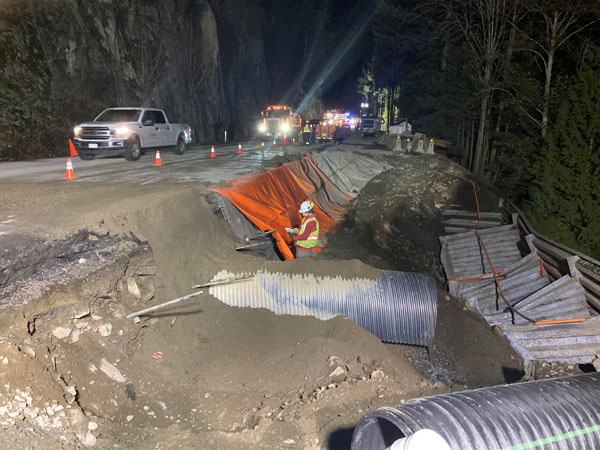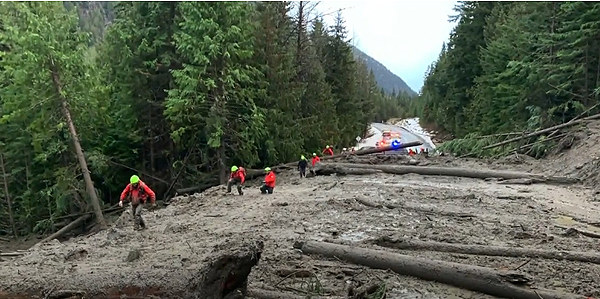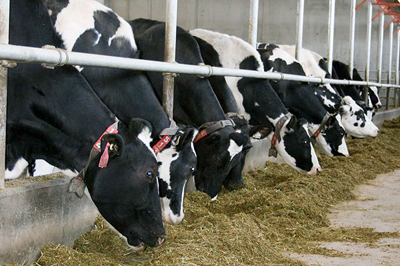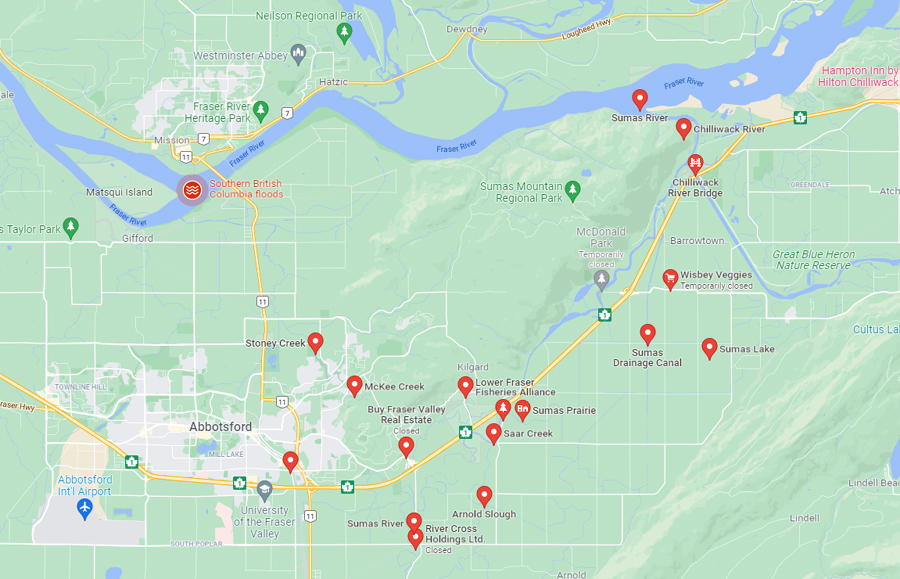
Saturday November 20, 2021 | LANGFORD, BC
by Mary P Brooke, Editor | Island Social Trends
Today on a calm-weather Saturday morning, the BC Government held a news conference with an update on emergency response to the areas impacted by the November 15 storm which with extreme winds and rainfall has caused havoc now described by officials as a natural disaster.
This comes on the heels of daily emergency updates by Public Safety Minister and Solicitor General Mike Farnworth, Transportation and Infrastructure Minister Rob Fleming, and Agriculture, Food and Fisheries Minister Lana Popham during this past week.
Limited retail fuel:

Regarding the provincially-ordered 30-litre fuel tank fill limit (in effect November 19 to December 1, 2021), Minister Farnworth acknowledged that the fill-up limit is “challenging” and “inconvenient” but that the process “will get us through this critical period”.
Designated emergency and commercial vehicles can still get full fills. Farnworth acknowledged some people’s line of work might mean having to loop back to get another 30 litres of fuel (during Order, over the next 10 days) but that also encourages being “careful in our travel” and cautious use of resources.
Loss of life:
Today Public Safety Minister and Solicitor General Mike Farnworth opened today’s Saturday morning BC emergency media briefing at 11:30 am with condolences to the families who have been impacted by this sudden loss of life, caused by the rainfall-driven landslide near Duffy Lake in the BC Interior.
The bodies of three men were found in an area east of Agassiz along Highway 7 and a section of Highway 99, known as the Duffy Lake Road.
Renewed attention to weather warnings:
Farnworth also thanked Environment Canada for fast-tracking a new ranking system for atmospheric rivers (similar to what is already used in the USA), so that the BC Government will be better equipped to issue weather warnings.
Just such a warning was issued today at 3 pm today, advising people and communities on BC’s north coast (Haida Gwaii, Prince Rupert, Kitimat and surrounding communities) to “get prepared for heavy rain and strong winds”.
The system is expected to reach the South Coast in a weakened state by Monday November 22 “including regions that are vulnerable due to previous flooding” (that would include Langford where several areas were flooded on November 15). | Environment Canada – Victoria-area 7-day forecast
Transportation update:
Ministry of Transportation and Infrastructure (MOTI) Minister Rob Fleming this morning thanked the workers who’ve been tireless in their efforts to deal with highway damage issues as a result of the storm. Highways 99, 3 and 7 remain “severely damaged”, though traffic is getting through in various ways.
Highway 99 is now open for people travelling for essential purposes only, connecting the Lower Mainland to Pemberton and the Interior. That includes people who got stuck far from home and wish to return to their place of residence in the Lower Mainland, Fleming said today.

Traffic on the Highway 1 Malahat here on Vancouver Island opened to two-way travel last night (instead of single lane alternating) but with driving conditions that require a heightened level of caution while construction repairs continue; note: no median barrier, narrow lanes, limited shoulder widths and reduced speed zones.
That faster-than-expected reopening of the Malahat was announced by MOTI on Friday night November 19 around 8 pm (Tweeted out by Island Social Trends in real time) and Minister Fleming included the Malahat update in his announcement today.

Getting supply chains up and running is the main focus of getting roads re-opened, as articulate by Fleming today. He noted that people have been “up day and night” working around the clock to get things open again.
“The updates today would not be possible without people working at an accelerated exhausting pace, working together with local governments, with fire departments, with really everybody, including military, to plan the attack on getting the highways reopened,” said Fleming.
“We owe a debt of gratitude to all Ministry personnel who’ve been doing this for all British Columbians,” Fleming concluded.
Impacts on livestock:
Agriculture, Food and Fisheries Minister Lana Popham said water and emergency feed supplies are being provided to the many impacted farms in the Sumas Prairie area that were flooded, calling it a high priority for her ministry.
That included an air drop of four tonnes of feed this morning to a hog farm in Abbotsford, supporting the feed requirements of about 4,000 to 5,000 hogs, she said.
Clearbrook Grain & Milling in Abbotsford is serving as a staging area to gather that feed and BC Wildfire Service is moving it by helicopter to the impacted farms.
“Our ministry is working very closely with suppliers at the port and the feed mills at Abbotsford, and the result is that we’ve secured ingredients that are now being shipped to three main Abbotsford feed mills so that livestock will be getting feed,” said Popham.
Feed has been secured for about five to six days, and will need to look outside the port after that time, Popham explained. That includes looking at “extremely generous offers” from the federal government, Alberta, Saskatchewan and “our neighbours in Washington State”.
Dairy, poultry, hogs and cattle industries have been affected, and Popham’s ministry has been having daily video meetings to sort out needs, including with feed mills and suppliers. There is work being done on the permitting process to “allow farmers to get back into their farms as needed”.

The military assistance will be helping farmers access their farms “in a safer and quicker manner as conditions allow”, said Popham.
Yesterday Popham said 959 farms were under evacuation order, with more on evacuation alert. Over 25,500 hecatres of farmland have been impacted, of which 15,000 hectares are within BC’s Agricultural Land Reserve.
Impacts on food supply:
Farmers are considered “essential, as far as moving about on our highway system,” said Popham. “We’ve had good success seeing food moved through the Fraser Valley and Lower Mainland.” That included use of Highway 3, to get food to Vancouver-area farmer’s markets. A farmer’s market was also attended by one Fraser Valley farmer.
“Those are very important food hubs during time of emergency,” said Popham, who has headed up the Agriculture file for the Horgan provincial government since mid-2017.
A clean-up team is in the planning phase, working with industry associations including the Port of Vancouver. “CFIA (Canada Food and Inspection Agency) is also supporting this discussion. Conversations with municipalities include accessing landfills for disposal.
Many thousands of animals were lost in the flooding of the Sumas Prairie farming area (including cows and chickens).
Abbotsford farm area used to be a lake:
The Sumas Prairie used to be Sumas Lake. About 100 years ago it was drained to take advantage of fertile farming land beneath it. Two rivers would have normally fed into the previous lake (the Fraser River and from that the Sumas River, and the The Nooksack River flows north of Bellingham in Washington State which — when it overflows, water can end up in the Sumas River, flowing northeast, crossing the border into Abbotsford).
Dams and pump systems were erected long ago against all this. But Mother Nature showed her force in reclaiming what has almost become a lake during this past week’s flood, bringing up the need for attentiveness to climate change.
Evidently, the BC government has been warned for years about the Sumas dike potentially failing. A consultant’s report found that most of the sample of dikes surveyed in the Lower Mainland were vulnerable to failure. The 2015 study commissioned by the BC government assessed a sample of 75 Lower Mainland dikes and found that 71 per cent were vulnerable to failure by overtopping (floodwaters go over top of the dike and wash it away), during either a major Fraser River or coastal flood.
Cost is likely one factor as to why action had not been taken on shoring up that infrastructure.
Veterinarians helping out:
As for a list of veterinarians who are available to assist, there a “list that’s growing daily”. About 70 BC veterinarians are available from around the province (earlier this week Popham said 35 veterinarians were on standby from Alberta and Saskatchewan). Popham says her ministry is “not aware of any medication shortages”, but that a note has been sent across the country and through that other sources of supply are potentially available.
Moving veterinarians and and out of the valley, Harbour Air has offered to fly veterinarians into Harrison Lake and relocate them as needed.
Continued difficult situation:
Popham asked that British Columbians “continue to tread lightly around each other and show that patience that’s needed” in these challenging times. The best thing to do is follow the orders, so that needed resources are available to allow government to “continue to respond to this very difficult situation”.
Minister Popham to the farmers today: “To the farmers that have had no sleep and an incredibly emotional and difficult time, thank you for all of your efforts. I know you’re helping each other, you’re working with your communities, and you’re trying to get back on line. And all of our hearts are with you.”
Next update:
The next regularly scheduled Emergency Update by Farnworth, Fleming and Popham is scheduled for 11:30 am Monday November 22 (on the usual government social media livestreams).
===== RELATED:
BC Coroner confirms four deceased & one missing due to storm-driven landslide (November 20, 2021 | Island Social Trends)
Emergency orders to manage gasoline supply: at the pump, on the road (November 19, 2021 | Island Social Trends)
Flooding in Langford, sandbags available (November 15, 2021 | Island Social Trends)











